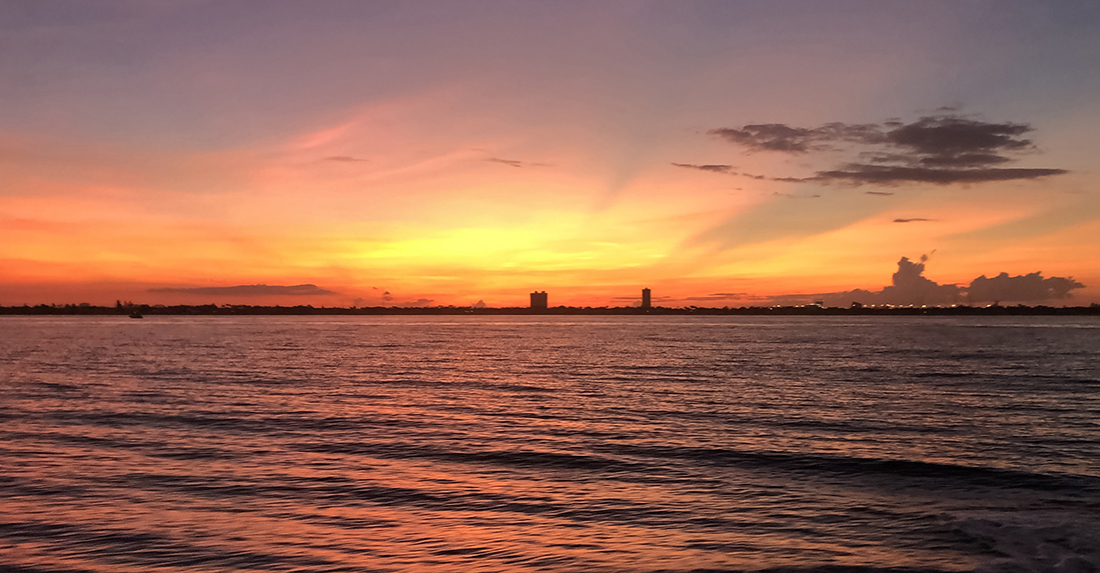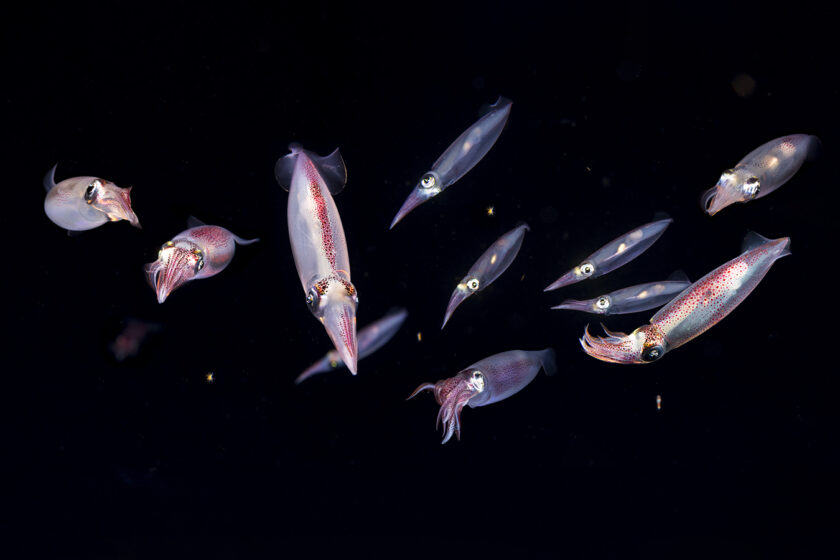An open ocean diving adventure by night offshore of South Florida’a Palm Beach Coast.
It’s well past sundown and we’re several miles off the coast of Palm Beach, Florida, preparing to make a night dive. But not just any night dive. For the duration of this dive, the seabed will be nowhere in sight. That is because we are not diving a reef or wreck, rather we are much farther out in the Gulf Stream, where the bottom can be anywhere from 350 to 550 feet below us. Known as blackwater diving, this practice is basically drift diving in open water at night, using a lighted downline for reference. To an outsider, the concept of blackwater diving might fall somewhere between adventurous and insanity. But this is where die-hard blackwater divers find themselves on a regular basis.
Why They Do It
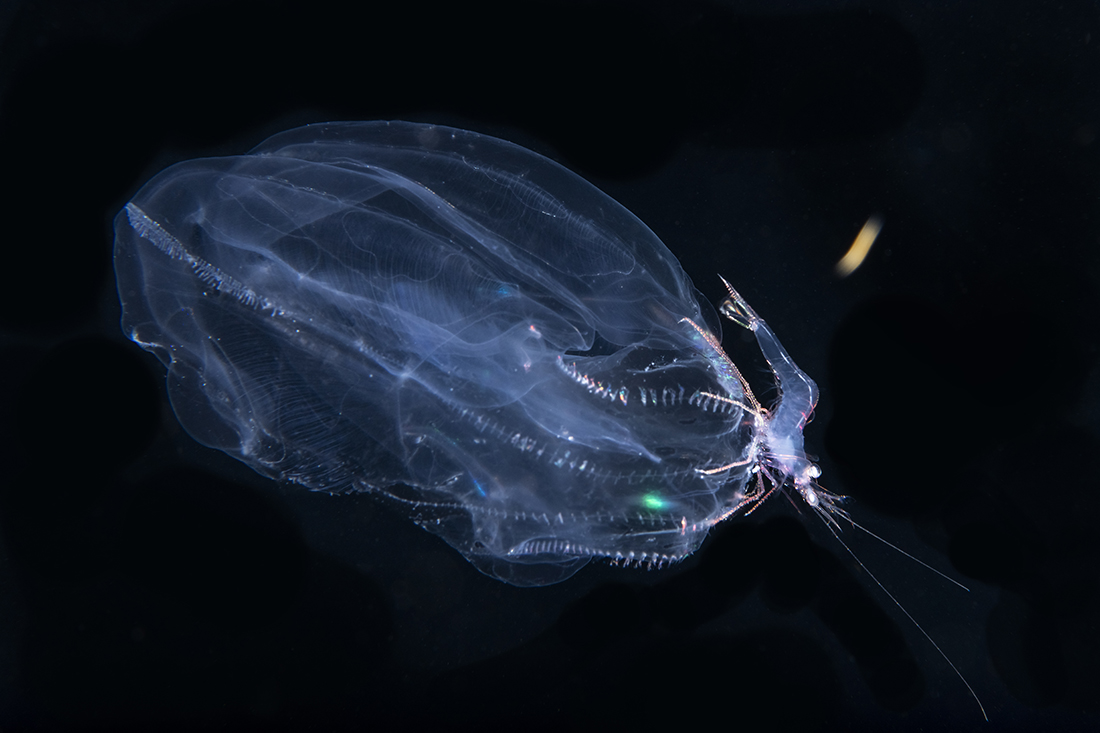
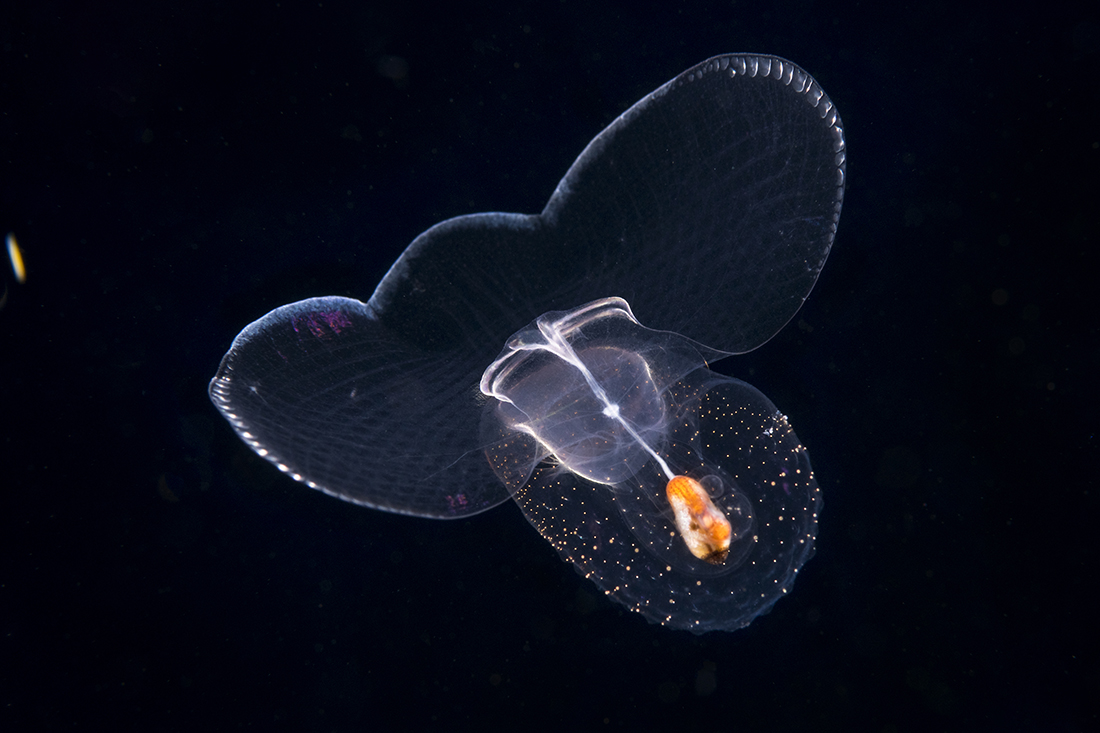
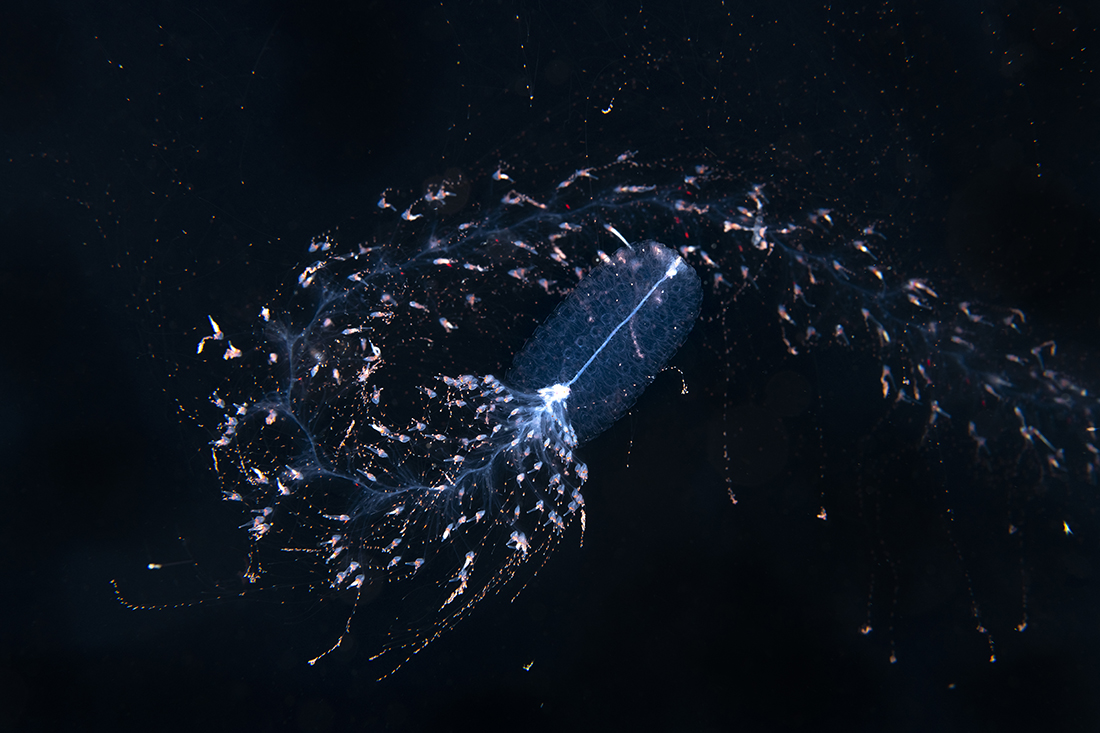
The variety of marine life we find in this pitch-black realm includes an almost unimaginable litany of shapes and forms, the majority of which are seldom larger than a fingernail. The most common subjects seen on blackwater dives are small gelatinous creatures like comb jellies (Ctenophora), colonial Siphonophores and salps, sea butterflies and even tiny thimble shaped acorn worms floating as freely as the divers in the water column. Some of the more tantalizing prizes might include small pelagic squid, octopuses to flatfish like flounder, sole, and tonguefish.
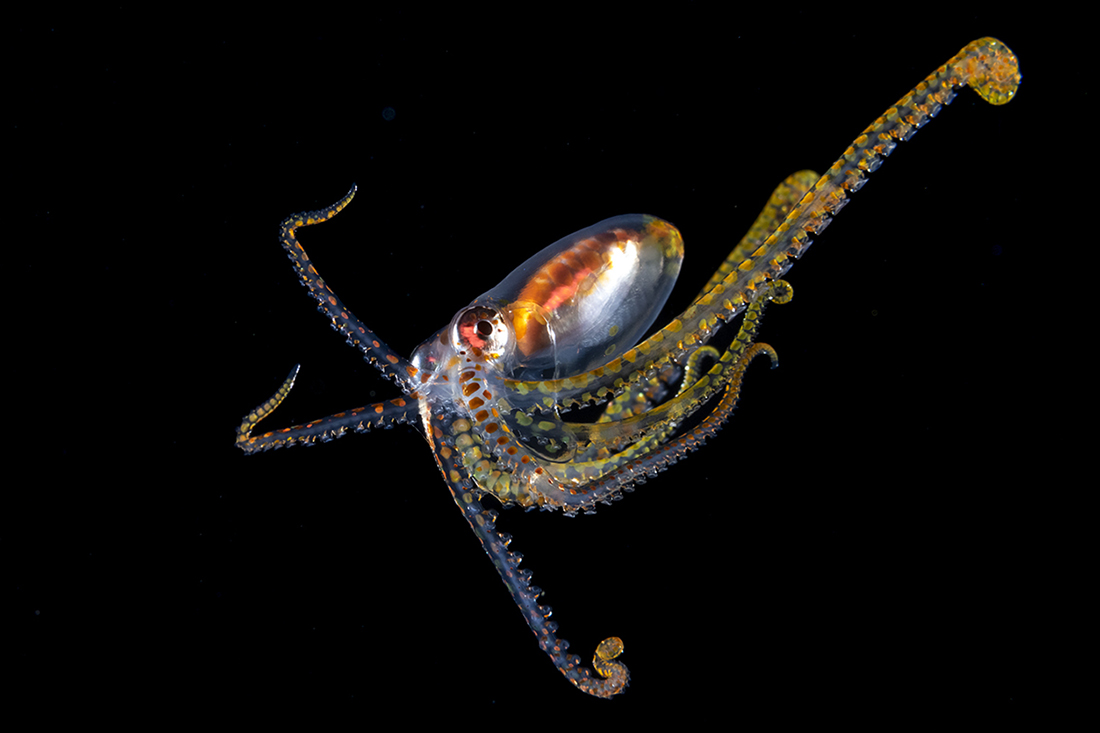
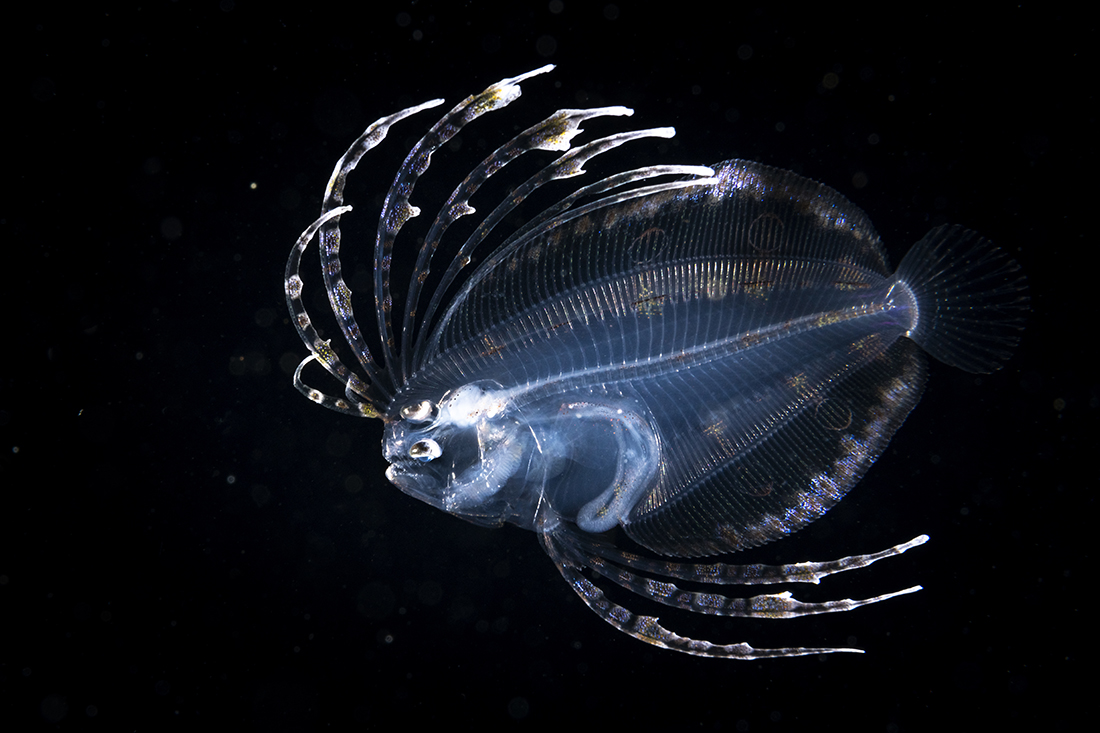
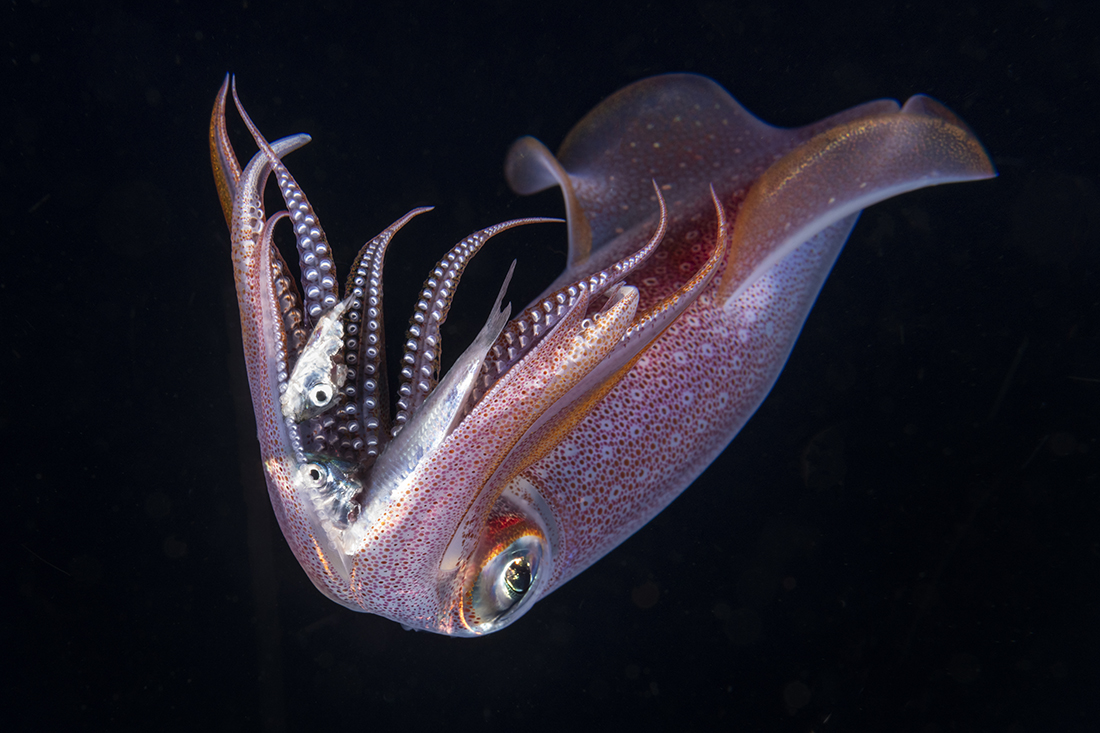
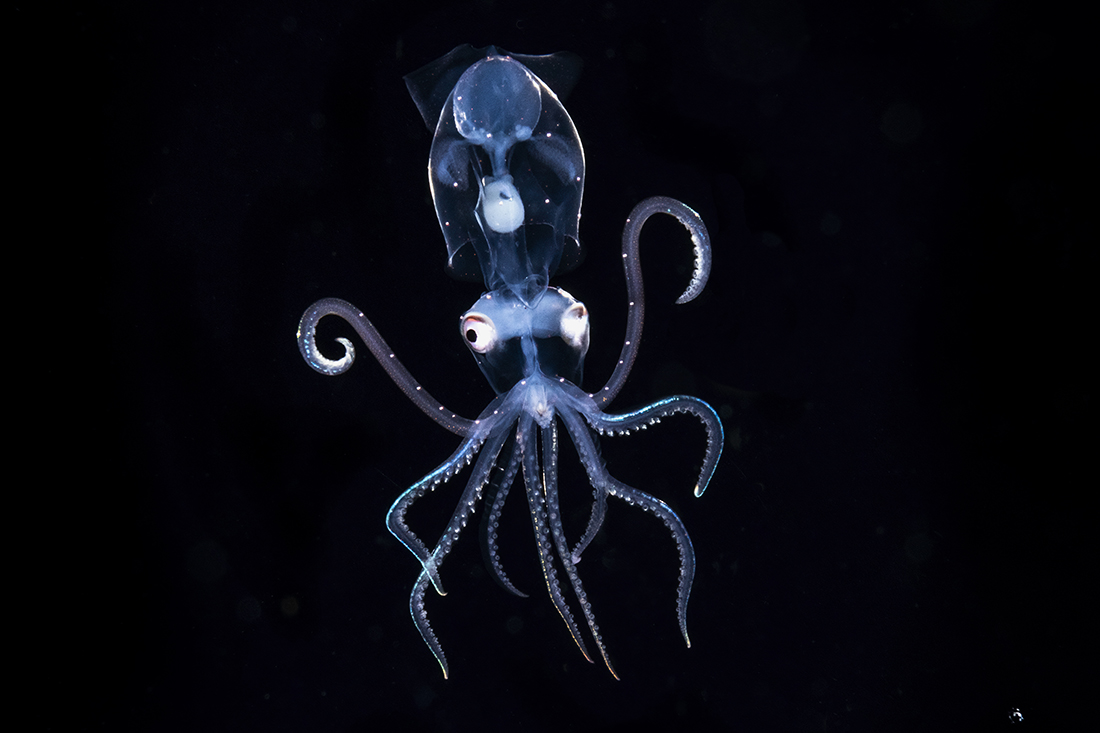
Sharpear enope squid (Ancistrocheirus lesueurii) is a deep-water species found in the mesopelagic depths (200–1000 m down) throughout the oceans tropical and subtropical regions of the world. During the night they are among the wide variety of cephalopods that make the journey to shallower depths where divers are very likely to see them, provided your eyes are sharp enough to spot them as they are generally quite small.
Then there are the deep dwellers, subjects previously known only to deep sea exploration like tripod fish, velvet whalefish, ribbon fish, cusk-eels and deep-water anglerfish. Some subjects carry real headscratcher names like bony-eared assfish (Acanthonus armatus) snaggletooth stareater and snaketooth swallower. Transparent, and at times quite elaborate during their larval stages of development, these strange looking fish are far removed from what they look like as adults.
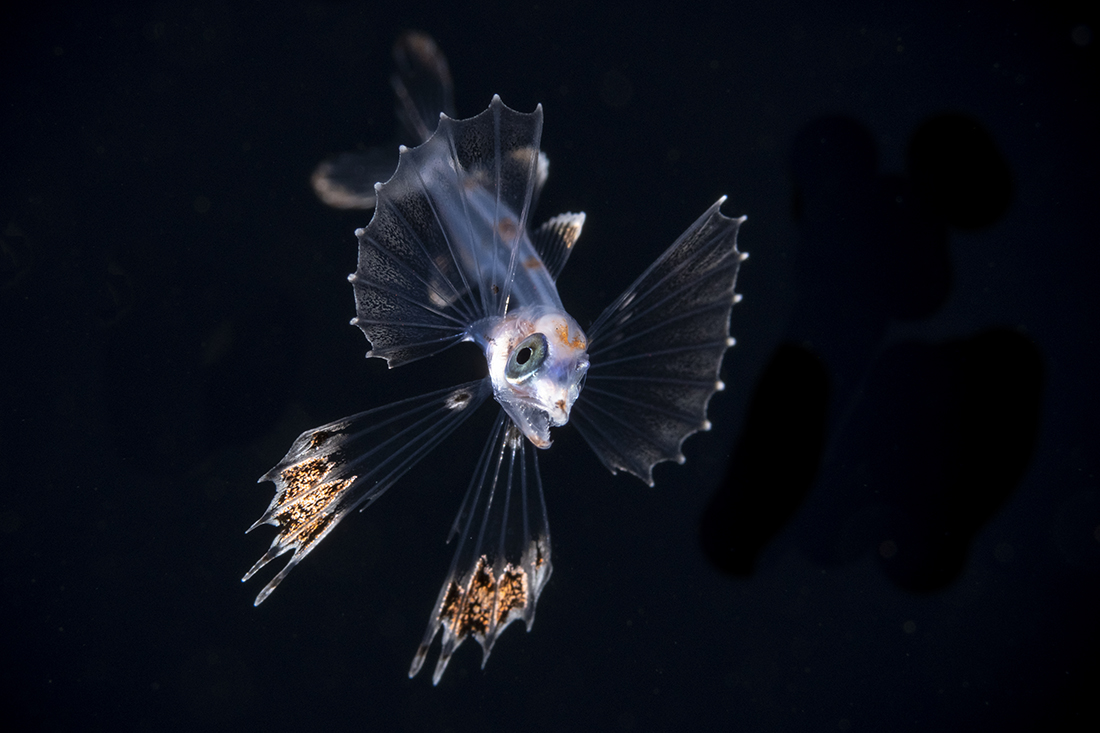
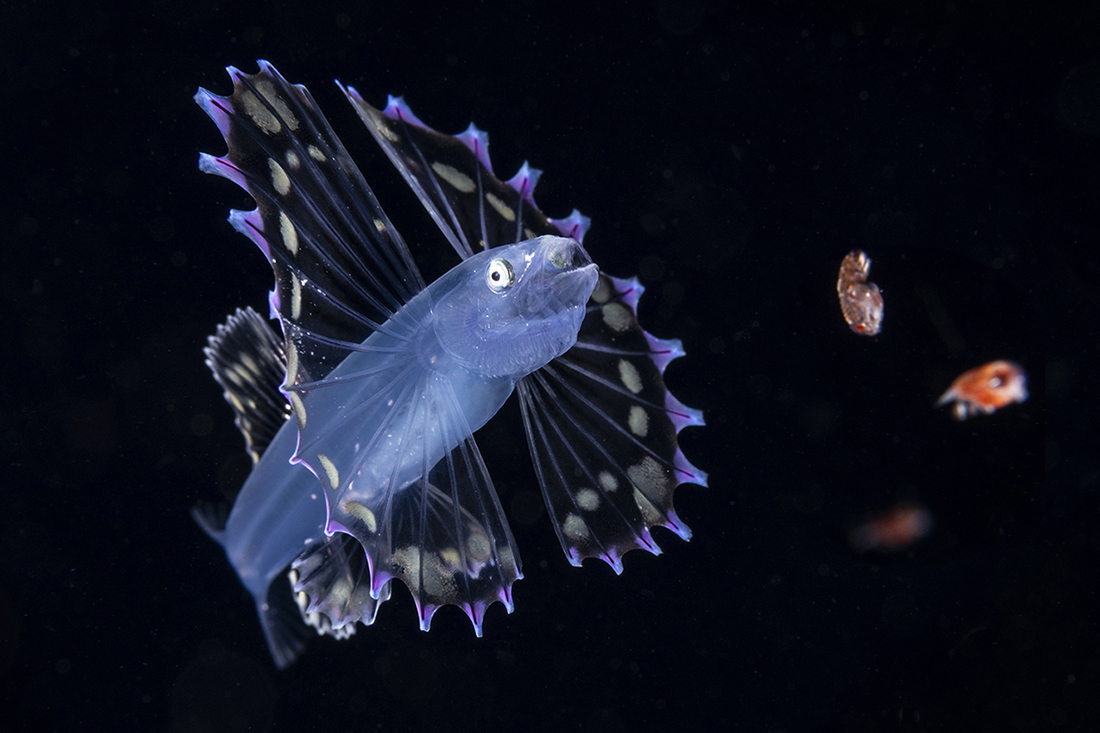
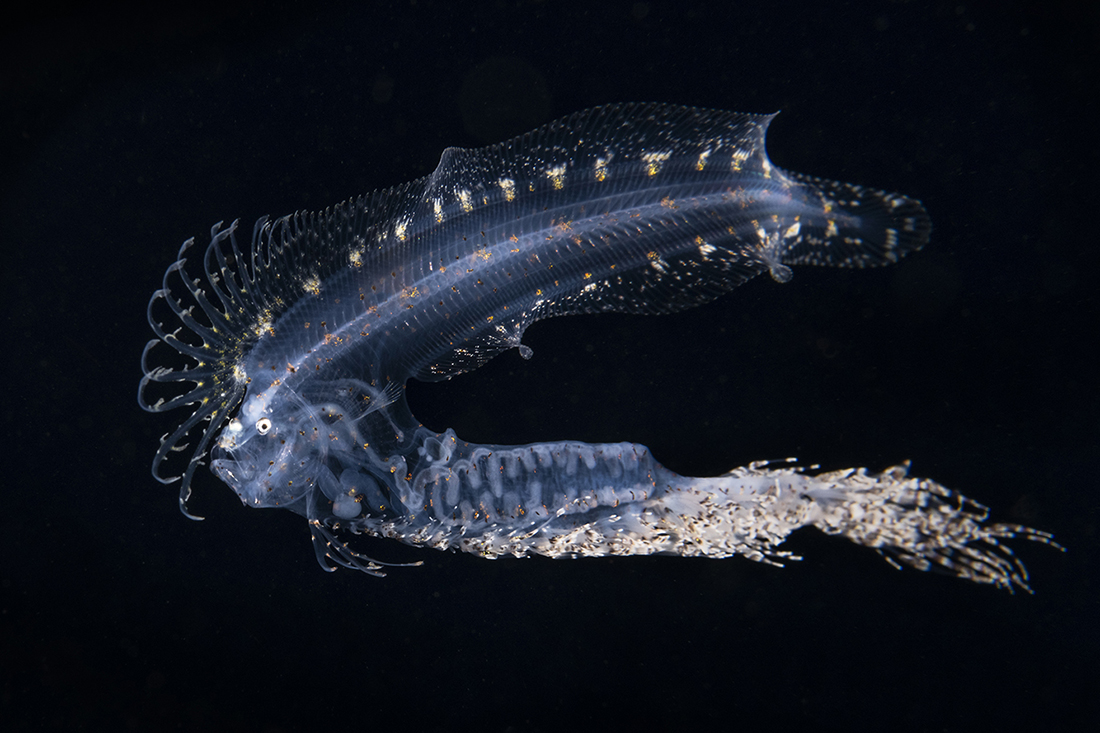
Other deep-water denizens include cephalopods such as blanket octopus and diamond squid that are as colorful and ornate as they are mysterious.
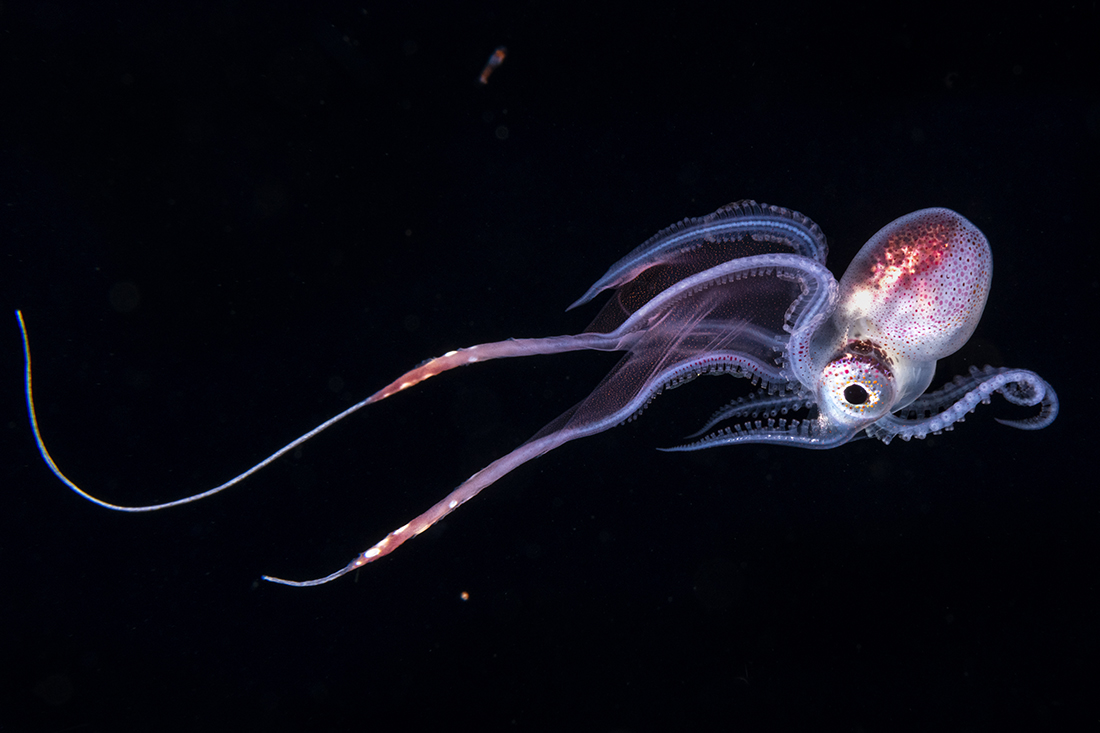
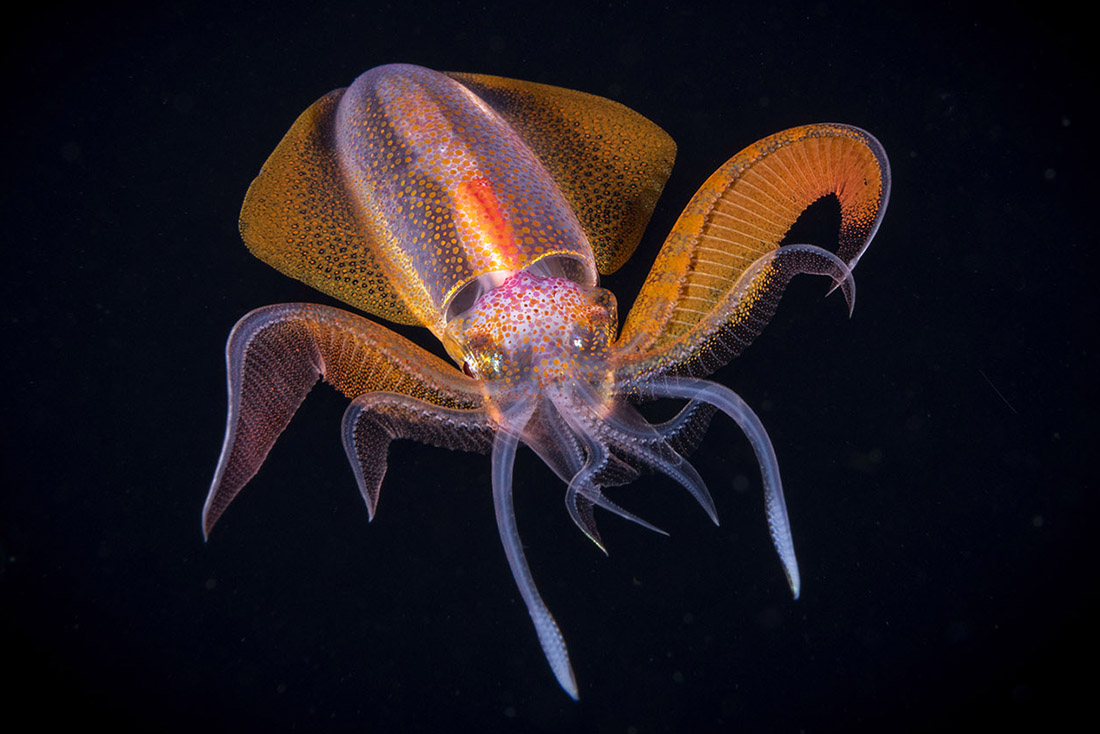
One thing is certain, many unique creatures will make their appearance during the night and often ride upwellings to a mere few feet of the surface. This makes it possible for recreational divers and photographers to see what no one else would ever see during a conventional night dive. And we never know what the lights will bring in, which is part of the attraction to this type of diving. There is a very real opportunity to see something that no one has ever seen before.
It is for this reason blackwater diving is offered in a wide number of destinations around the world, from the Philippines, Indonesia and Hawaii to Cozumel Mexico, and yes, Palm Beach Florida.
Taking the Plunge in the Black
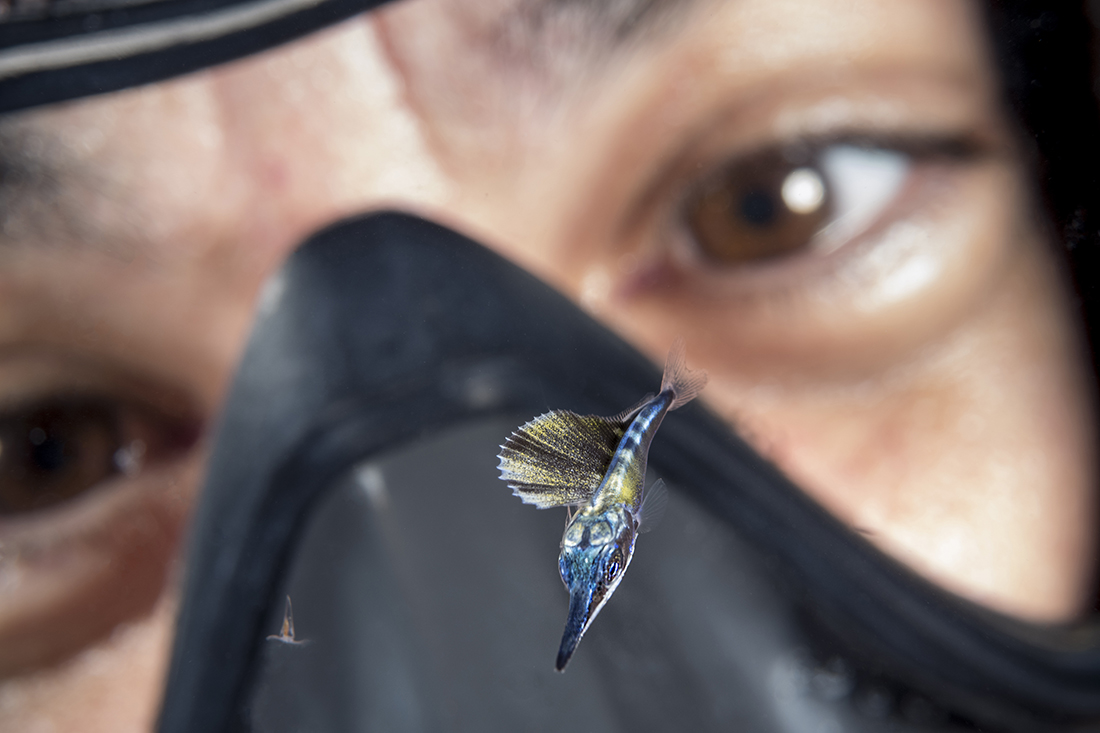
When it comes to doing a blackwater dive, the two most common reactions I come across are “it sounds cool but is it difficult?” or “I really don’t think I’m cut out for this!”
For newcomers, the hardest part of doing their first submersion on a blackwater dive is the space between them and the surface of the water, as our minds can create an imaginary barrier between the known and the unknown. But once submerged, the nightmare thought of a Megalodon shark or giant Kraken coming up to eat you is replaced by the curiosity of all these strange little creatures (half smaller than your finger) floating weightless in the nighttime realm of inner space.
Just because we happen to be diving in exceedingly deep parts of the ocean doesn’t mean there is a need to go deep to see these subjects. Fact is, most blackwater divers rarely go past a depth of 60 feet. Often times, your average working depth will be between 3 and 30 feet.
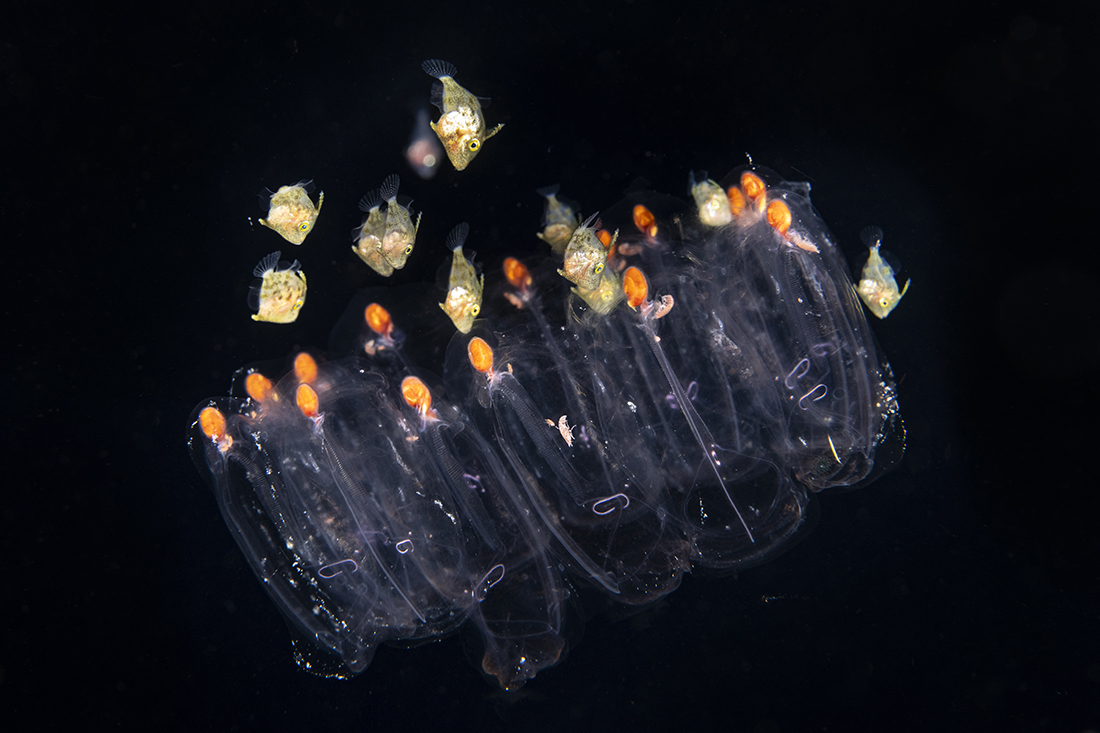
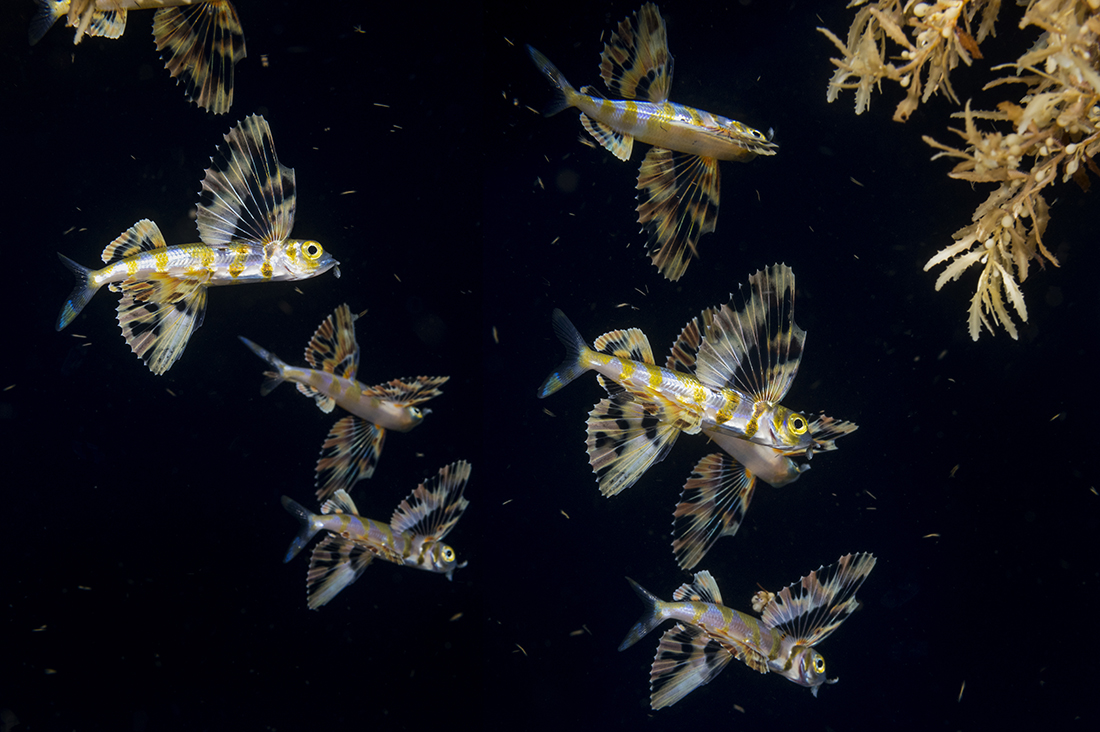
Drifting with you is bright illumination coming from a series of strong video lights strategically positioned on weighted downlines hanging from a large orange colored buoy on the surface. This type of lighting is pretty universal for downline systems used for blackwater diving around the world.
In addition to serving as a visual reference point for divers to know where they are, the lights also serve as an attractant to wide assortment of zooplankton, and juvenile fish to small oceanic species of squid. The length of the downline itself may vary between 40 and 65 feet.
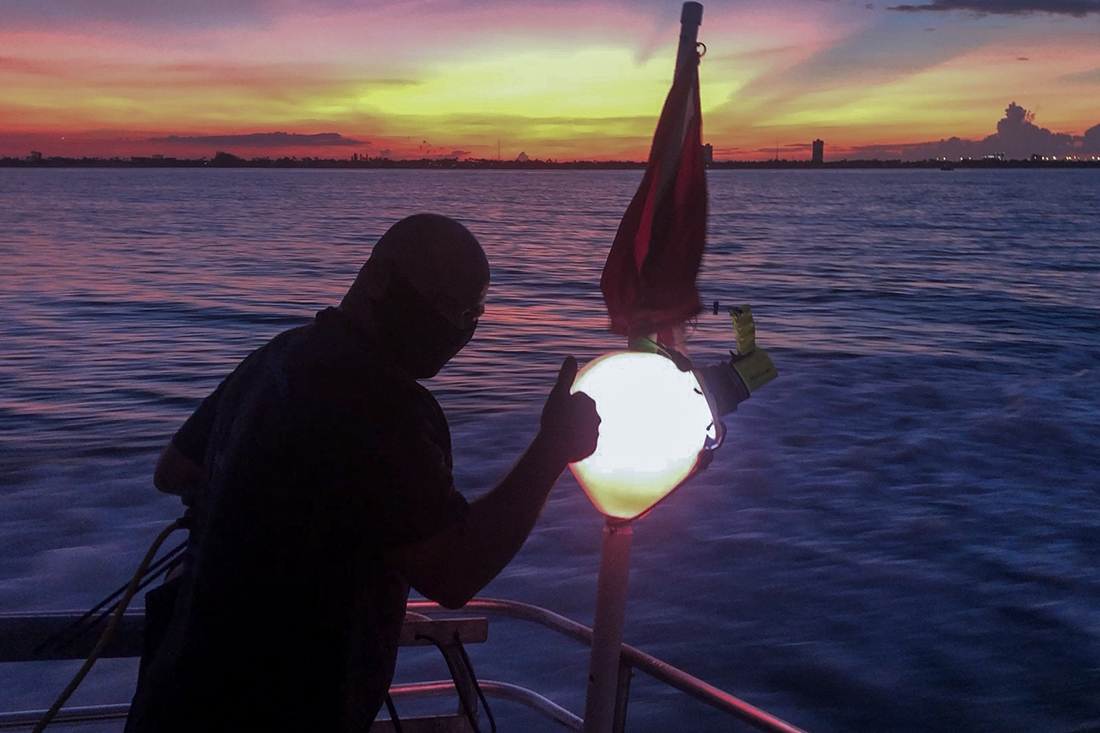
The bright orange buoy also has a light mounted to it. Sometimes referred to as the “Pumpkin” due to the bright orange glow it gives off resembling a Halloween Jack-o-lantern, the lit-up buoy enables the surface support team to safely track the diver’s general whereabouts at all times, putting safety first!
Why Palm Beach and Nowhere Else in Florida
The reason why blackwater diving can take place off the Palm Beach Coast is due to a geological advantage of the Continental Shelf that puts deep water a mere five miles / 8 kilometers from shore. As the Gulf Stream makes its four-knot journey through the Florida Straits, the narrowness of the shelf allows this oceanic current to pass at its closest point to shore of anywhere in the State. On a map that point happens between Boynton Beach and Palm Beach.
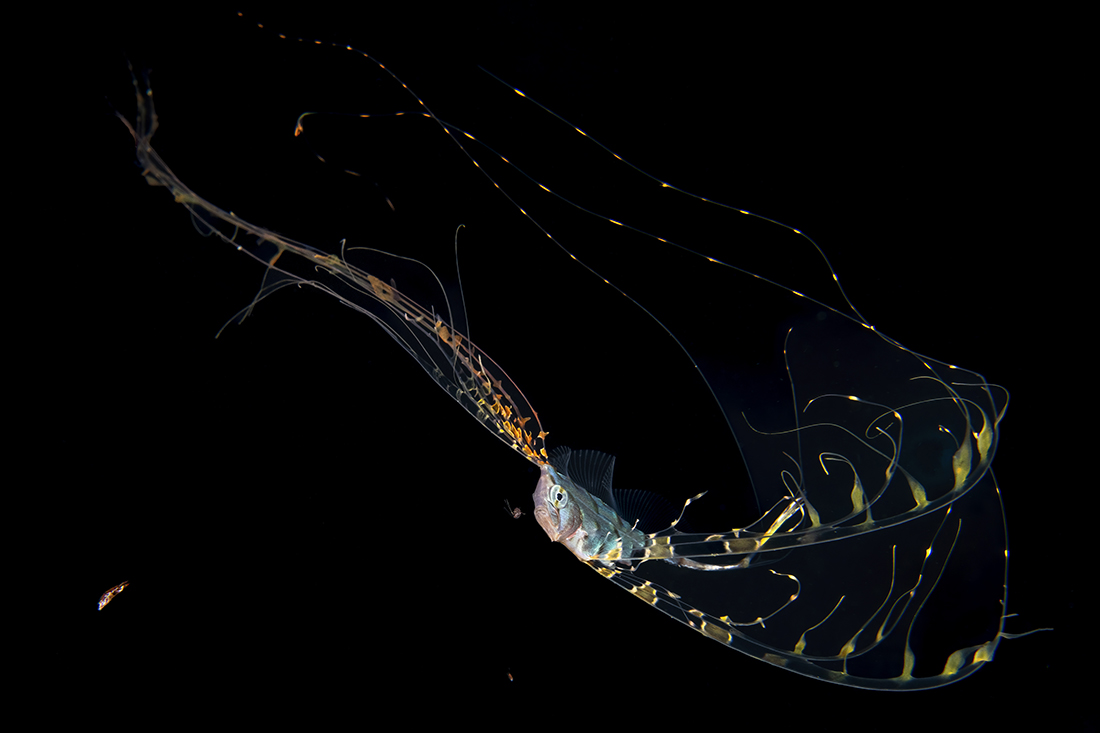
Having access to a deep body of water places blackwater divers in the pathway of the largest synchronous migration in the world – Diel Vertical Migration. Also known as Diurnal Vertical Migration (DVM) the underlying stimulus to this global event is in response to changes in light intensity throughout a 24-hour period. As late afternoon progresses to night, organisms dwelling beneath the photic zone during the day will embark on a remarkable long-distance journey to the ocean surface.
In addition to vertical migration, horizontal migration plays heavily into the cast of characters seen on blackwater dives. Unlike DVM, the horizontal movement of plankton acts as a disbursement process for a variety of coastal and open water crustaceans, mollusks (squid the most common in the group), and ray-finned fishes that include flying fish (more than half of the world’s species are found in the Atlantic) to larval and juvenile billfish, mahi-mahi and mackerel like wahoo and kingfish.
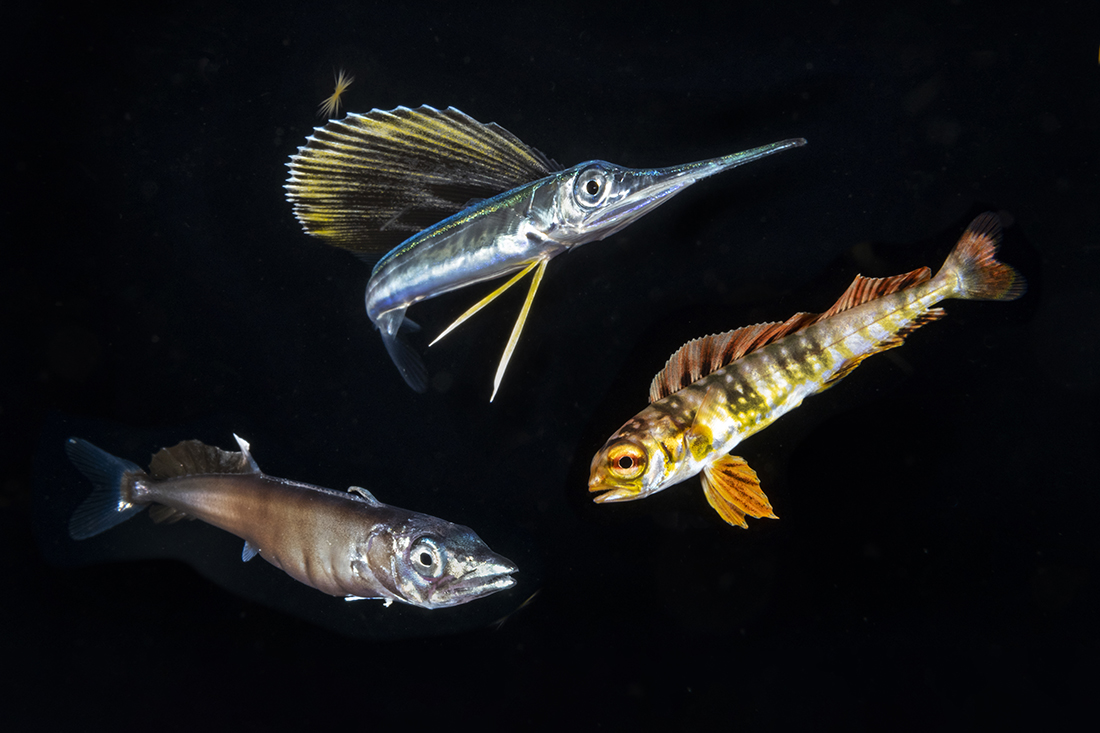
Remarkably, the volume of the Gulf Stream here dwarfs all the rivers that empty into the Atlantic combined! Yet once you’re in the water and within the Gulf Stream’s strong yet gentle grip there is hardly any sensation of movement.
Gaining Experience
Like anything else, becoming a proficient blackwater diver requires putting the time in whenever possible. The proficiencies needed for successful blackwater diving begin with fine tuning your buoyancy skills. It is also suggested to have a computer that is constantly backlit and positioned for easy viewing and reference. Divers should enter the water next to the buoy and begin a slow descent in order to orient to the dark 360º environment. With limited visual references to help maintain position in the water column, paying attention to your ears can also be a good first alert to ascending or descending.
A good strategy for finding subjects is to hunt along the outside edge of the glow cast by the lights on the downline. This is particularly important for light-sensitive subjects. Using a strong handheld torch with a tight beam is one of the most effective hunting tools for locating small subjects. Some divers will attach these lights in addition to their focus lights on their camera housings. I prefer hand holding mine so that the focus lights to don’t interfere with the spotlight’s greater ability to punch further into the dark. When I find something, I can let go of it as it is attached to my BCD with a short safety line, allowing me to switch to my camera when I come into range.
In terms of tempo, be patient and allow the water and the downline lights to work for you. In the beginning fin slowly and orbit the line, using your lights to search the water ahead of you. Look small and you will find big, as many of the most beautiful creatures are tiny.
One thing is for sure, all it takes is one good blackwater dive and you will likely become addicted.
Blackwater Dive Charters in Palm Beach County
If you feel ready to try blackwater diving for the first time, simply give it a go in Florida, here are the dive operators in Palm Beach County that can make it happen.
Kyalami Scuba Club – thescubaclub.com
Pura Vida Divers – puravidadivers.com
Walker’s Dive Charters – walkersdivecharters.com
